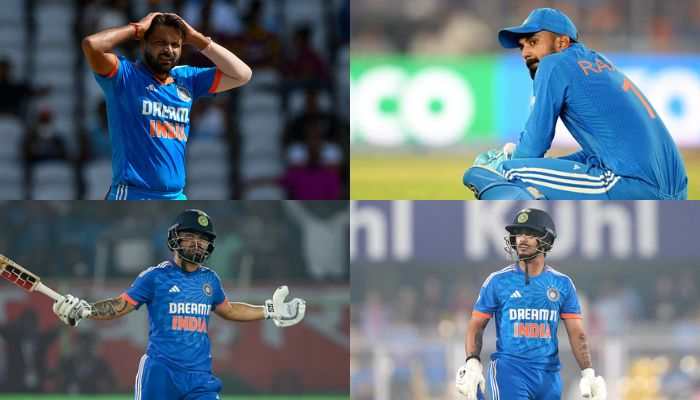Who Killed Moosewala To Pitchside My Life In Indian Cricket: 4 Books You Must Add To Your Shelf Bibliophiles
Here is a list of books you can prefer to read in the upcoming month.
Trending Photos
) Image for representation
Image for representation A book that has stayed with you ever since and that, every time you remember it, makes that powerful feeling come alive again? Here is a list of books you can prefer to read in the upcoming month.
Who Killed Moosewala?
On 29 May 2022, Sidhu Moosewala, a rising star of Punjabi hip-hop with more than 30 million followers across various social media platforms, was gunned down by gangsters. At the time of his death, he was already a hugely popular youth icon in Punjab, a rebel, and perhaps one of the most controversial figures in 21st-century Punjab. This book looks at the events of the day he was killed and the subsequent investigation that followed. Was Moosewala a product of the stormy history of the region or the one who tried to change the course of history?
I Named My Sister Silence
By-Manoj Rupda
Translated by Hansda Sowvendra Shekhar
A little boy follows an elephant into a forest, fascinated and as if in a trance. His foray ends in tragedy, for the elephant is eaten alive by wild dogs even as the boy is sitting atop it.
Remembering this years later, aboard a giant ship, he wonders if it is his destiny to witness the destruction of immense things. Like the land of Bastar, like the elephant, like his ship that will soon be decommissioned.
He recalls his half-sister's immense silence too. Madavi Irma, the silent girl who nurtured him and gave him a good education by selling what she collected from the forest. Until one day, she left home to join the Maoist Dada Log. When he returns home, Bastar is afire. The Adivasis had mounted an armed rebellion to protect their land and lives. In retaliation, whole villages have been razed to the ground, and their inhabitants stuffed into dingy camps. Determined to seek out his sister, he enters the forest once again, this time as a young man, and is soon confronted with the elaborate deceptions of those who rule and of those who profit from the land they do not own or understand.
Manoj Rupda's I Named My Sister Silence is a quietly fierce work that continues to burn bright in the mind long after the last page has been read.
Also read: Home Workouts: 8 Effective Weight Loss Exercises To Achieve Fitness Goals
Noncooperation In India
Nonviolent Strategy and protest, 1920–22
By-David Hardiman
The Non-Cooperation Movement of 1920-22, led by Mahatma Gandhi, challenged every aspect of British rule in India. It was supported by people from all levels of the social hierarchy and united Hindus and Muslims in a way never again achieved by Indian nationalists. It was remarkably nonviolent. In all, it was one of the major mass protests of modern times. Yet there are almost no accounts of the entire movement, although many aspects of it have been covered by local-level studies.
This volume both brings together and builds on these studies, looking at fractious all-India debates over strategy; the major grievances that drove local-level campaigns; the ways leaders braided together these streams of protest within a nationalist agenda; and the distinctive features of popular nonviolence for a righteous cause. David Hardiman's previous volume, The Nonviolent Struggle for Indian Freedom, examined the history of nonviolent resistance in the Indian nationalist movement.
The present volume takes his study forward to examine the culmination of this first surge of struggle. While the campaign of 1920-22 did not achieve its desired objective of immediate self-rule, it did succeed in shaking to the core the authority of the British in India.
Pitchside My Life In Indian Cricket
By- Amrit Mathur
Few people have had a 360-degree view of Indian cricket as Amrit Mathur has over the last three decades. In 1992, he was appointed manager of the Indian team to South Africa, the first team to tour post-apartheid. Four years later he was part of PILCOM, the organising committee for the 1996 Cricket World Cup, which was conducted across India, Pakistan, and Sri Lanka.
As the manager on tour with the Indian team, Amrit witnessed key moments in Indian cricket history. He was witness to the first use of TV technology (Sachin run out in Durban, 1992), was on the Lord's balcony when Sourav Ganguly took off his shirt in celebration (NatWest final, 2002), at Centurion when Sachin took down Waqar and Wasim Akram during India's rousing 2003 World Cup campaign. In 2004, he watched Sehwag score 309 at Multan from the Indian dressing room.
In the words of Dr Shashi Tharoor, 'In his three decades as a top executive on the frontlines of cricket, Amrit Mathur has been a key figure in some of the game's most iconic moments. This first-hand account gives the reader a rare glimpse into the cloistered yet public world of elite cricket in a detailed and accessible manner. Enjoyable reading for every cricket fan!'







)
)
)
)
)
)
)
)
)
)
